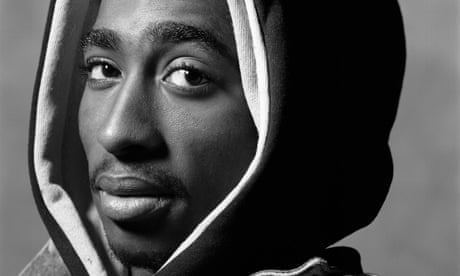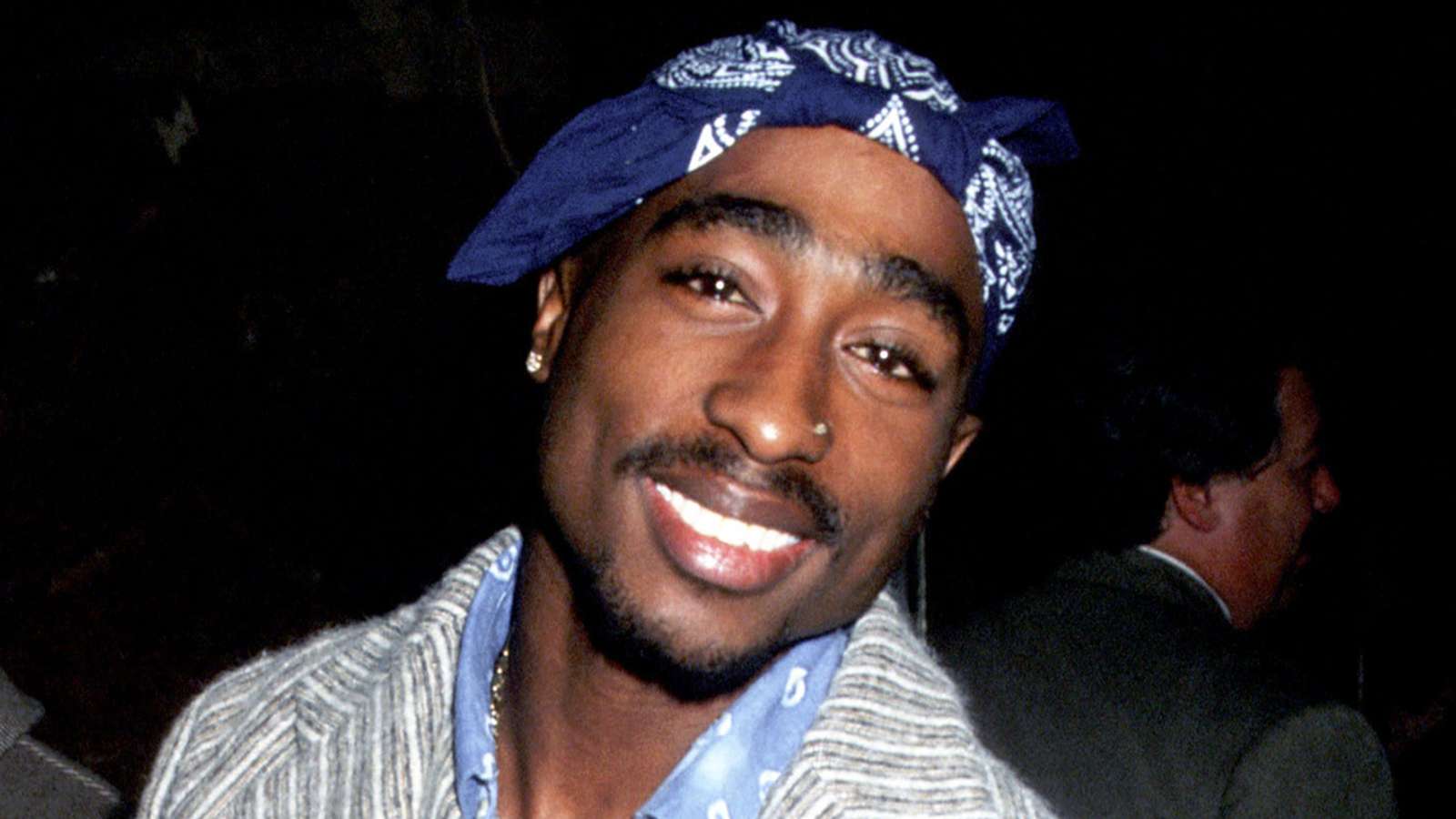For nearly three decades, the murders of Tupac Shakur and Christopher Wallace, The Notorious B.I.G., have remained two of the most infamous and debated unsolved crimes in American history. A tangled web of gang rivalries, music industry beef, and whispered allegations of police corruption has left the public with more questions than answers. Now, explosive new claims suggest that the truth may have been captured on a secret FBI videotape, a piece of evidence that could unravel the official narrative and expose a conspiracy far deeper and more sinister than previously imagined.
 \
\
The bombshell revelation comes from one of Tupac’s former bodyguards, Kevin Hackey, who was acting as an undercover asset for a multi-agency task force at the time of the rapper’s death. Hackey alleges that he saw official paperwork confirming that the FBI has a video of the Las Vegas shooting that claimed Tupac’s life on September 7, 1996. The tape, purportedly captured from a vehicle just 24 feet behind the BMW in which Tupac was a passenger, is said to be the smoking gun, containing not only a clear view of the crime but also the identification of the shooter.
This alleged tape is at the heart of the current legal battle surrounding Dwayne “Keefe D” Davis, who was charged in 2023 with Tupac’s murder and is awaiting trial. The case against Davis hinges on his own public confessions, which he now claims were fabricated under duress. Davis alleges that in 2008, he was cornered by an LAPD-led task force and given a chilling ultimatum: provide a story implicating his now-deceased nephew, Orlando Anderson, in Tupac’s murder, or face 25 years in prison on unrelated charges. Davis, fearing for his freedom, claims he concocted a story that the task force wanted to hear, a story that has now come back to haunt him.
The credibility of this task force and its methods are now under intense scrutiny. The lead detective, Greg Kading, was later removed from the task force following an external investigation into allegations of bribing and intimidating suspects to provide false testimony. Davis asserts that he was a victim of these very tactics, pressured into becoming the key to a seemingly solved case. The plot thickens with the revelation that the same LAPD officer who helped set up the sting operation on Davis later brokered a $150,000 deal for him to repeat his “confession” on the BET series “Death Row Chronicles”. Davis, by accepting this deal, violated the immunity agreement he had with the task force, leading to his eventual arrest. He now argues that he was furthering a lie for financial gain, a lie he was coerced into telling in the first place, positioning himself as the “official scapegoat” in the Tupac case.
Adding another layer of doubt to the official narrative is Suge Knight, the former CEO of Death Row Records and the man who was in the driver’s seat next to Tupac on that fatal night. Knight, an eyewitness to the crime, has consistently and vehemently denied that Orlando Anderson was the shooter. In multiple prison interviews, he has stated with “thousand percent” certainty that Anderson was not the triggerman. Instead, Knight points the finger at a far more powerful and protected group: corrupt LAPD officers. He has specifically named former Rampart Division officer Rafael Perez and his crew as being involved, suggesting the hit was not just on Tupac, but on him as well.
Knight’s theory of a “murder for hire” hit orchestrated by crooked cops is not without corroboration. Puffy’s former bodyguard, Jean Deal, has claimed that an eyewitness at the scene told him there was more than one shooter, a detail that aligns with Knight’s account of being “blocked in” during the attack. The existence of the FBI tape, if proven true, would be the ultimate arbiter of these conflicting claims. However, the Bureau has a history of stonewalling requests for information on Tupac, having refused to release the vast majority of its 4,000-page file on the rapper, citing “national security” concerns. If the tape does indeed show LAPD officers involved in the murder of a cultural icon, it’s not hard to understand why it would remain classified.
The FBI’s surveillance of Death Row Records was no secret. A multi-agency task force had been investigating Suge Knight and his label for years, looking into everything from money laundering and arms trafficking to racketeering and homicide. The feds had turned employees into informants, tapped phones, and had undercover assets like Kevin Hackey embedded within the organization. Hackey has claimed that as part of his undercover role, he was played wiretaps of conversations within the company in the days leading up to Tupac’s murder that were “very suspicious”.
The investigation into Death Row’s finances revealed a complex web of alleged illicit activities. The FBI believed the label’s initial funding came from notorious kingpins Michael “Harry-O” Harris and Ricardo Crockett, with the money being laundered through various music companies, including a joint venture between Sony and Solar Records. At the time of his death, Tupac himself was in the process of auditing Death Row, claiming he was owed millions in royalties. The audit had uncovered financial misconduct, with Tupac being charged for expenses that were not his, such as child support for another artist on the label. He was in significant personal debt, despite his albums generating tens of millions of dollars for the record company. Just a week before his death, Tupac had fired Death Row’s lawyer, David Kenner, and the head of security, Reggie Wright Jr., signaling his intent to break free from the label.
The theory of an inside job, a “Death Row takeover,” has gained traction over the years. With Suge Knight potentially being killed in the Las Vegas shooting and Tupac on his way out, who stood to gain control of the multi-million dollar empire? Suspicion has fallen on a circle of individuals that includes David Kenner, Reggie Wright Jr., and Knight’s ex-wife, Sharifa Knight, who was having an affair with Rampart cop Kevin Gaines. It is alleged that this group, with the help of corrupt officers from the infamous Rampart Division, orchestrated the hit on Suge and Tupac to seize control of the label.
The connections between Death Row and the Rampart Division are well-documented. Officers like David Mack and Rafael Perez were seen working off-duty security for the label, and Kevin Gaines was found to have had credit cards registered to Death Row. These same officers were later implicated in the murder of The Notorious B.I.G. in Los Angeles in March 1997. In a chilling parallel to the Tupac case, evidence pointed to a meticulously planned hit involving police communication and tactics. An LAPD internal affairs investigation concluded that Mack and Perez had conspired in Biggie’s murder, but the finding was “illegally adjudicated,” and no charges were ever pressed.

Was Biggie’s murder a tragic consequence of the East Coast-West Coast beef, or was it, as some investigators believe, a desperate act to cover up the police involvement in Tupac’s murder? By killing Biggie, the narrative of a rap war was solidified, drawing attention away from the corrupt officers who may have pulled the strings in both assassinations.
As Dwayne “Keefe D” Davis prepares for his trial, the question of the secret FBI tape looms large. Its existence could either confirm his guilt or expose him as the fall guy in a conspiracy that reaches the highest levels of law enforcement. The families of Tupac Shakur and Christopher Wallace have waited long enough for justice. The public deserves to know the truth, no matter how unsettling it may be. If the FBI is truly in possession of a video that can solve these murders once and for all, the time has come to release it. The secrets of that September night in Las Vegas have been buried for too long.





